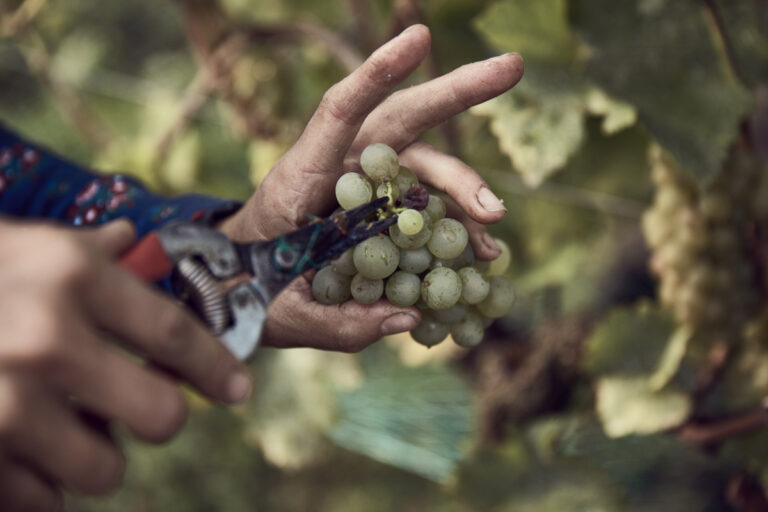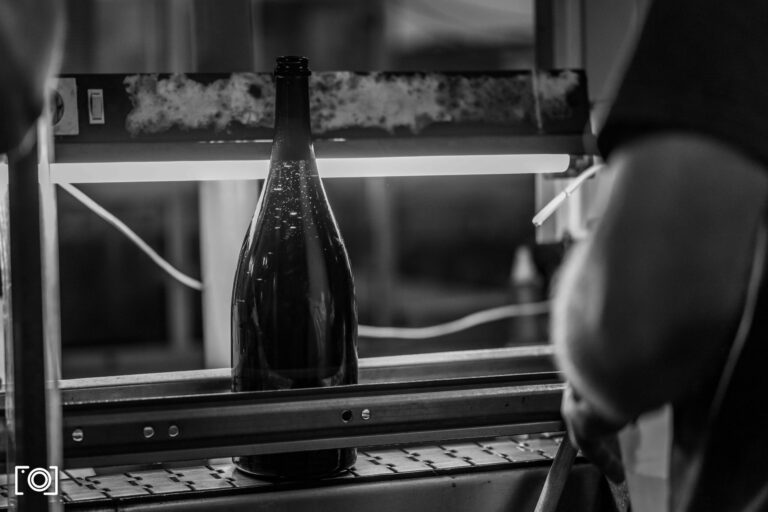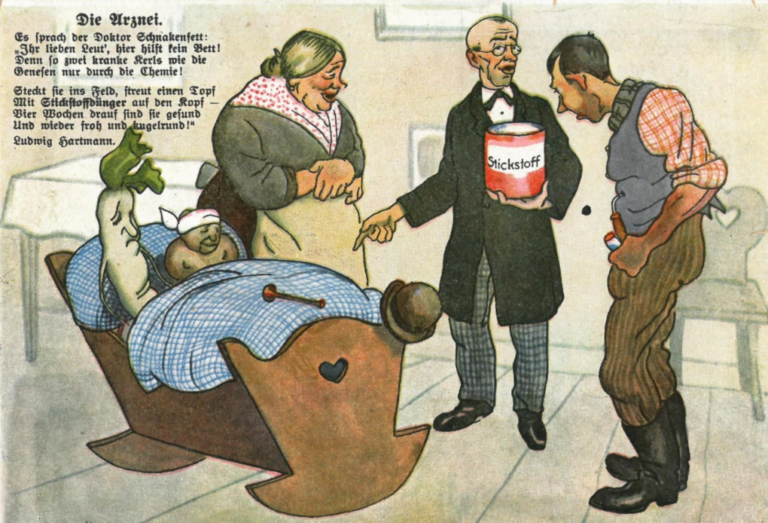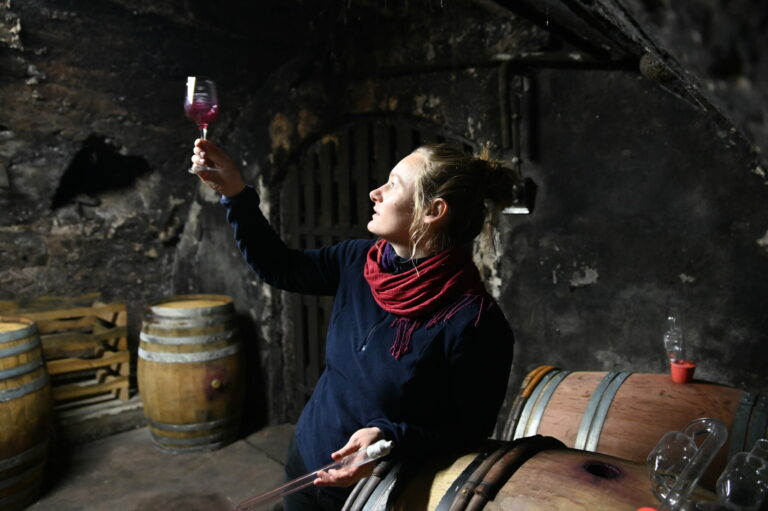How Burgundersekt Is Usurping Riesling’s Sparkling Crown
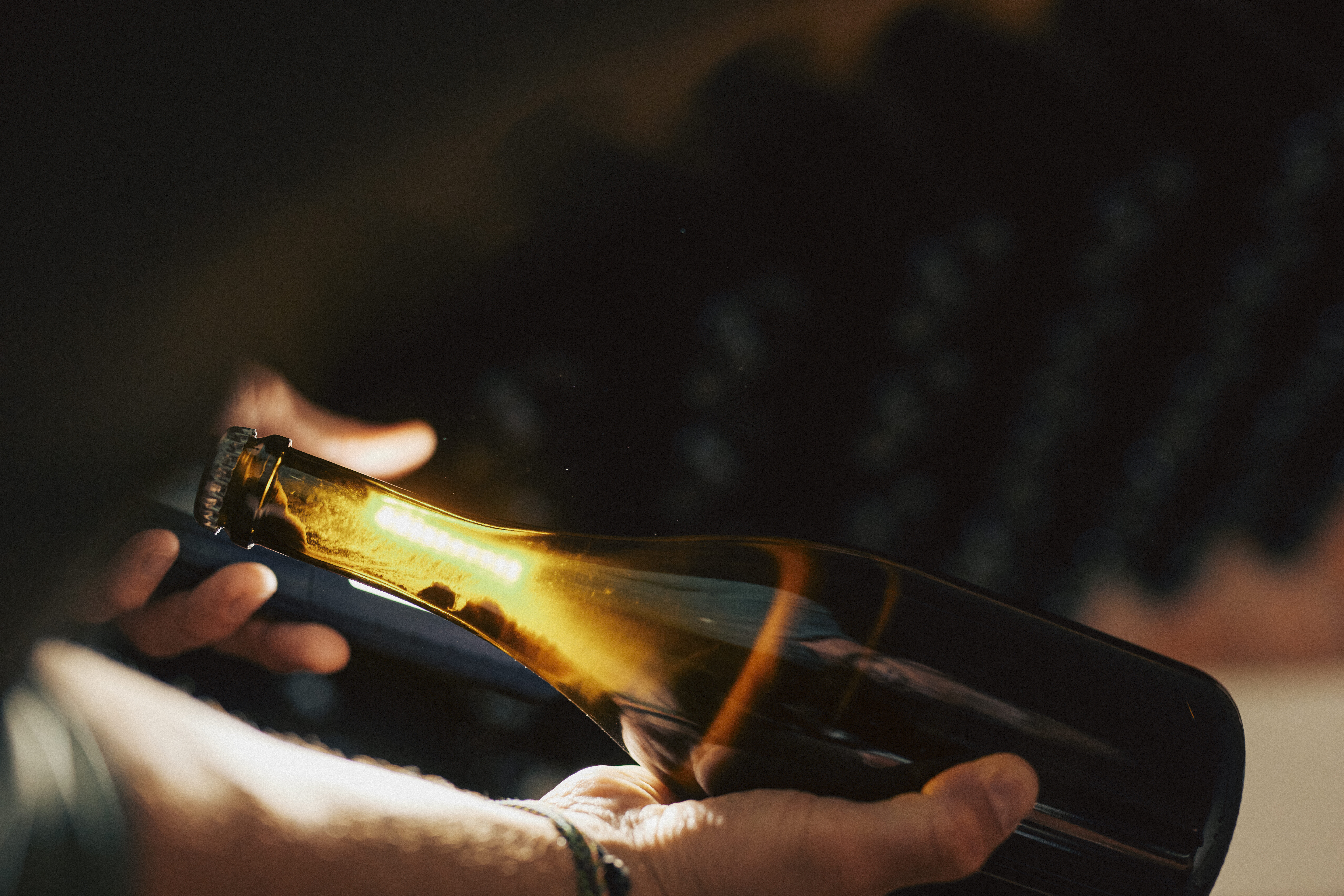
Ten years ago, a group of roughly 20 Champagne producers teamed up under the name Terres et Vins de Champagne. Their debut presentation in a small hotel in Aÿ was the first dedicated sparkling event I visited. As anyone who focuses on sparkling wine can tell you, that small initial event has since morphed into a week-long, well attended movement known as Printemps de Champagne.
The Initial Spark(le)
However, at that time — 2012 — artisanally produced German sekt remained in a fairy-tale slumber. Beyond a few larger houses like Bardong and Solter, as well as estates focused exclusively on sekt production, little was happening. But at that debut Champagne event, I made the acquaintance of one German winegrower who already enjoyed an outstanding reputation for hand-crafted sparkling wine. His name was Volker Raumland.
While development in the German sekt landscape may have seemed a bit flat, it was vigorously bubbling below. Raumland understood early and well that enduring change stands the best chance of success as a collective rather than an individual, and even then was working hard to build a critical mass of contacts in Champagne.
As early as 2013, it became clear that things were happening when the traditional Pfalz producer Reichsrat von Buhl announced the appointment of Mathieu Kauffmann as its new cellar master. An Alsace native who loved Riesling, and the former Chef de Cave at Champagne house Bollinger, Kauffmann was eager to work with that variety in both the still and sparkling wine segments. It was no surprise that the first sekt to leave von Buhl’s cellar, known as the Erstgegorene or first ferment, was a Riesling sekt.
The Erstgegorene had that mythical “it,” the very thing lacking
in any prior attempt to tell the story of German sekt.
The von Buhl Riesling sekt achieved status as a German wine capable of conveying that quantum of nobility and distinction more typically associated with Champagne. For all the quality that Germany had already shown itself capable of producing, the Erstgegorene had that mythical “it,” the very thing lacking in any prior attempt to tell the story of German sekt. Yet Kauffmann’s dedication alone wouldn’t have been enough to raise artisanally produced German sekt to enduring popularity. Fortunately, a lively culture had developed parallel to his efforts.
Burgundersekt: All that Sparkles Is Not Riesling
Riesling sekt is, however, only one pillar of the sekt movement. Equally interesting is the development of Burgundersekt, German sparkling wine from Burgunder (aka Pinot family) grapes. These sparkling wines are less well known internationally because they have a harder time in international comparison; Champagne, Franciacorta, Trento DOC or English Sparkling are more congruent with Riesling sparkling wine because the same grape varieties are involved.
But German Burgundersekt does have one clear advantage: diversity. Sekt is available from all 13 German winegrowing regions. What other sekt region can offer wines whose grapes hail from limestone, calcareous marl, slate, sandstone, granite, gypsum, clay, basalt, etc.? It’s a truly inimitable part of the German Burgundersekt experience.
As new attention has been lavished on German sekt, producers outside the ostensible elite have decided to produce their own bubbles. These include several new houses primarily or entirely focused on the production of high-quality sparklers. This latter group includes the now more than 10 year old Sekthaus Streit, housed in the Hessische Bergstraße cellars of what was once the state-owned wine domaine. Because this cellar was carved deep into the Griesel, Bensheim’s most prominent hillside, the sekt producers named the project in its honor: Griesel & Companie.
The estate’s owners and operators, the Streit family, followed their own tune in founding a new sekt cellar. Instead of hiring an experienced chef de cave as von Buhl did, they snatched young Niko Brandner right out of school. Initially a bank trainee in the “Churfranconian” town of Bürgstadt, Brandner quickly determined that an office job was not his calling.
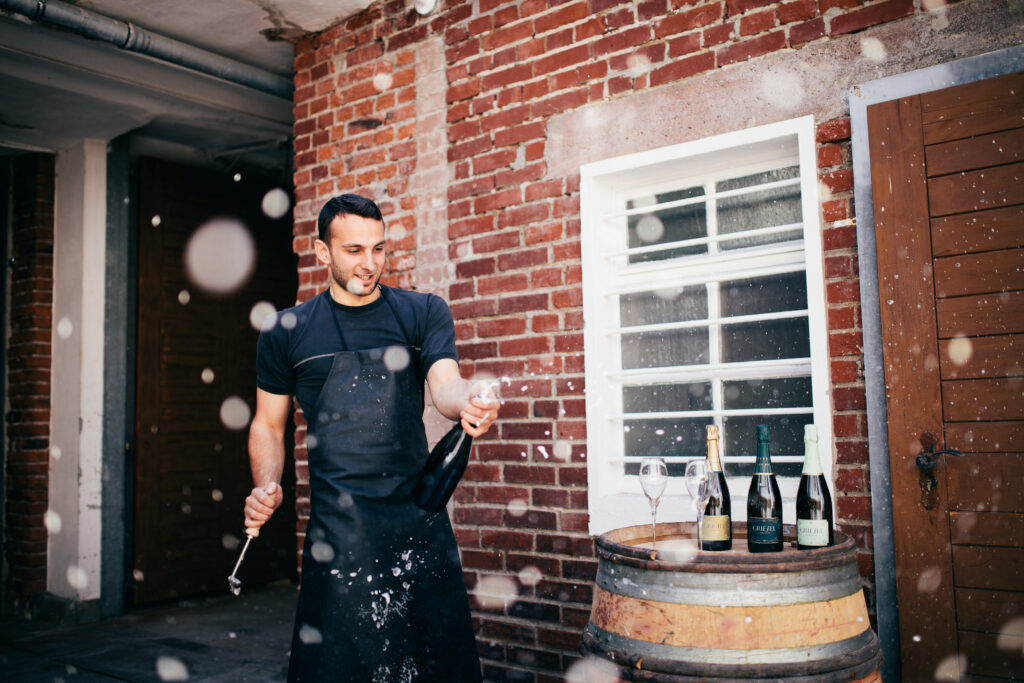
So one day he headed over to Weingut Fürst, also in Bürgstadt, and inquired whether he could do an apprenticeship with them. He ended up attending university parallel to his training at the estate, and spent time peeking over Volker Raumland’s shoulder. His talent and dedication drew notice, the two sides found themselves compatible, and with a solid portion of chutzpah on both sides, the Streit Family and Brandner came to an agreement.
Today Niko Brandner is on the spearhead of German bottle fermenters. An organizer by nature, he brought colleagues together in 2018 for the first Rohkost event, loosely modeled on the Terre et Vins de Champagne. One year later, together with Volker Raumland, he would help found Germany’s Verband der Traditionellen Sektmacher, a group of 40 sekt producers from around the country. This is perhaps best understood in the context that even the VDP, the Verband Deutscher Prädikatsweingüter, has since opened itself up to sekt and has now created a classification dedicated to sparkling wine.
The Sekt Generation
Probably the youngest member of the Traditionellen Sektmacher is Lena Singer-Fischer, who hails from a family of winegrowers in Ingelheim. Her Lena 2020 Blanc de Noir Extra Brut won the sekt award from the wine magazine Vinum on the wine’s debut in 2023.
Today, the sekt generation in Germany is thriving. Take Tobias Feiden, who makes stunning sekts from his Spätburgunder in the Riesling stronghold of Winningen on the Mosel. Or Johannes Aufricht, who gives his heart and soul not just to the family’s estate on Lake Constance, but also produces extremely linear Chardonnay sekts, with 30-year-old vine material from Meursault, Montrachet, and Champagne on a limestone-rich vineyard. And no listing could omit Julia Bertram and Benedikt Baltes on the Ahr or Carsten Saalwächter and the young generation of Spätburgunder specialists who are also giving sekt a whirl.
Winegrowers like Laura Burkhardt and Sebastian Schür end up feeling like old-timers, even if they themselves only began 10 years ago. Their first sekt was prepared in 2012 in their sandstone cellar in Bürgstadt, at a time when Schür was still working as the vineyard manager at Weingut Fürst, where he helped train Niko Brandner. Today Burkhardt-Schür arranges for their sekts to be disgorged at Griesel.
Other long-established sekt producers include Vincent Eymann and Anna and Christian Krack, who founded their sekt house in 2015 — on the basis of commissioned sekt production. For the Kracks, the learning curve of the past decade makes most sense when considered in the context of the intensive discussions both inside and outside the Verband der Traditionellen Sektkellereien.
Not only has the quality of the sites risen continuously, as can be seen at Raumland, but there is also much more organic and biodynamic cultivation. Base wines ferment and mature in barrique, and there is much more play with reduction and oxidation than in earlier years.
Mathieu Kauffmann’s Second Act
Many renowned winegrowers have sent their wines to Raumland to be made into sekt. This includes wines such as Pi no from Ökonomierat Rebholz and Aldinger’s Brut Nature. Both wines have long commanded top billing on the German sekt landscape. For the Aldingers, there is a connection through Heide-Rose Raumland, who was born a Wöhrwag, i.e. she hails from the eponymous Stuttgart estate that began producing sekt base wines back in the ‘90s, together with the Aldingers. The Aldingers have since expanded their production and rented a former bunker in Stuttgart as a storage facility.
Even amidst these active scenes, Mathieu Kauffmann is once again in the spotlight. Together with the Christmann family in the Pfalz, for the past three years he has been producing sekt under the name Christmann & Kauffmann. The Christmanns, a storied wine family in the Pfalz and perpetual vanguards of Germany’s finest Riesling producers, had the opportunity as a biodynamic estate to acquire numerous hectares on the edge of the Haardt, in some cases directly adjacent to their existing sites. They seized the opportunity and, in Kauffmann, have found likely the best possible partner. The driving force behind Pinot grapes at Christmann, and the Pinot sekt in particular, is the ninth generation of the family, Sophie Christman.
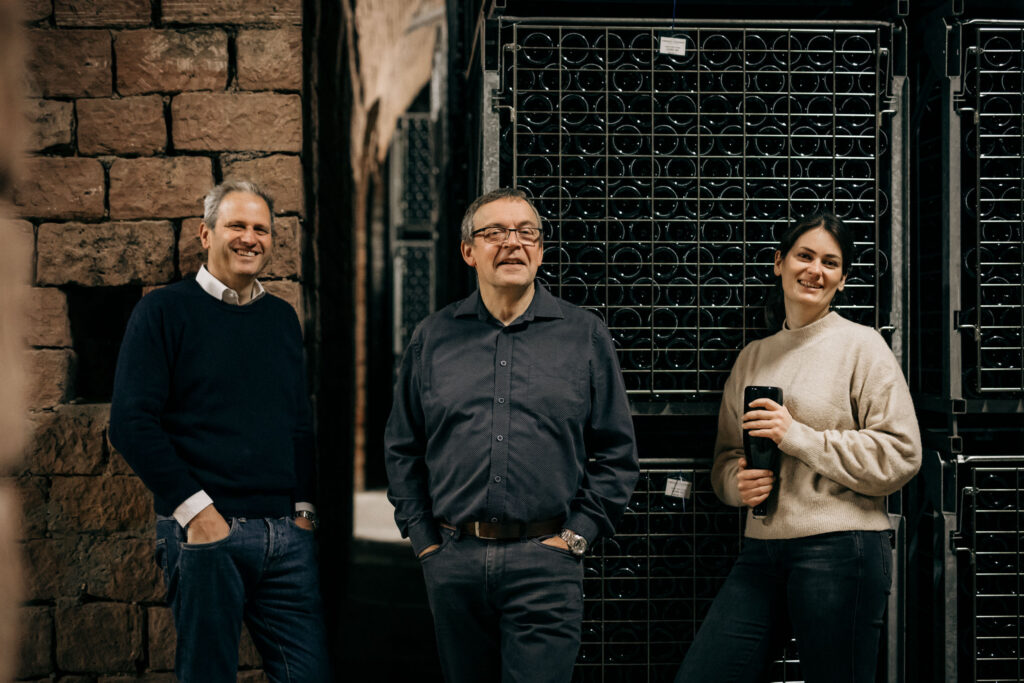
This passing of the baton is proving a common theme. Raumland, who founded the estate 40 years ago, is increasingly handing over responsibility to daughters Katharina and Marie-Luise. This should come as little surprise to those familiar with the sekt portfolio at Raumland: the house has long sold Cuvée Katharina, a Brut Nature of Pinot Blanc, Pinot Noir and Pinot Meunier, and Cuvée Marie-Luise, a single varietal Pinot Noir Brut.
After 10 intensive years, Germany’s first single-site sekts are now hitting the market, offering even more precise interpretations of the special terroir inherent to sektland Germany. German Burgundersekt may still be a step behind Riesling on the international stage, but there’s little reason to doubt the prowess of the rising generation. While I still enjoy Champagne, both the region and the product, it is the bubbling excitement, and unbeatably attractive prices, of the German sekt scene that hold my undivided attention.
Ten Sekts to Taste
2019 Aufricht, Blanc de Blancs, Brut Nature
Situated above Lake Constance at 400 meters of elevation, , this Blanc de Blancs is shaped by pure loam, beige limestone, granite, and gravel. The base wine was raised for approx. three months in new oak. Uncompromising and unapologetic with notes of yellow citrus, a bit of yuzu, cacao nips, and a whisper of caramel. A pure and elegant expression delivering momentum and plenty of salinity alongside a delicate, creamy mousse.
2018 Krack Freundeskreis Grande Cuvée Brut Nature
This is a blend of 50 % Chardonnay, 35 % Pinot Noir, and 15 % Meunier, raised in used tonneaux, Stück barrels and a small portion of stainless steel using fruit from in and around the sandstone and loess soils of Deidesheim. Aromas of mint, praline, biscuits, and Darjeeling, and accents of tropical and domestic fruits, are underscored by notes of vermouth, oak, and zippy lemon. Crisp and fresh, taut and chalky with the zesty bite of preserved lemons. Still quite young, it nonetheless suggests a promising future ahead.
Christmann & Kauffmann Cuvée No. 203 Brut Nature
The cuvée here is 50 % Spätburgunder, 25 % Weißburgunder, and 25 % Chardonnay, fermented in a large oak barrel. The fruit is sourced from Gimmeldinger, Königsbacher, and Mußbacher sites, with vines up to 46 years of age on limestone and colored sandstone. All grapes were harvested in August 2020, and after 25 months sur lie the sekt was disgorged in April 2023 with null dosage. Cuvée No. 203 presents as a deliberate fait accompli, with notes of bakery goods, ginger, and candied lemon zest. Despite its stormy nature, the palate is shaped by a juicy, linear citrus character and elegant tension.
2016 Aldinger Brut Nature
Until 2016, the varieties (38 % Chardonnay and 31 % each of Meunier and Pinot Noir) were harvested together and fermented as a field blend. Tirage occurred in July 2017 before which the wine was matured in used barrique barrels. Disgorgement followed in July 2022 with zero grams of dosage. Delicately floral, citrus, and crisp, with ripe notes of brioche, bread crust, lemon curd, and candied orange peel. On the palate, the approachable blend reveals grip and grit, as well as tender notes of seaberry, curry, bitter fruit, and citrus zest. A powerful sekt intended to pair with food, with a fine mousse and the characteristic smokiness and minerality of gypsum, plus significant minerality.
2019 Tobias Feiden Blanc de Noir Brut Nature
The TF Brut Nature was produced from grapes grown in a steep, south-facing, and first-class slate portion of the Winninger Domgarten. After 30 months sur lie, it was disgorged in January 2023. The sekt presents with grip, apple must, red berries, nuances of blood orange with zest, tobacco, and yeasty accents. A slight storminess in the mousse is followed by powerful red and yellow fruit; edgy with an elegant oxidation in the delicate, yeasty stone fruit aromas. A very strong newcomer!
2017 Griesel Pinot F Granit Brut Nature
Officially the wine is called Auerbacher Fürstenlager Pinot Noir Granit -F-, but that is even more of a mouthful than the sekt itself. The base wine, raised in tonneaux, spent 58 months sur lie before the granite-grown sekt was disgorged in June 2023 with zero grams of dosage. A powerhouse of immense tension, smoke and tobacco, nuts and yeast, bread crust, and pepper, with a bit of rubber boat reduction, crisp stone fruit, and citrus. Deep and spicy with grip, a fine bead, and saline finish: bitter, juicy, stony. A sekt for the next decade.
2014 Raumland Pinot Kirchenstück Réserve Brut Nature
A single varietal Pinot Noir from the Kirchenstück in Hohen-Sülzen, a 400-year-old parcel with weathered clayey limestone. The base wine was raised in stainless steel, while the sekt spent 90 months sur lie. Ethereal sekt with pure notes of mint, anise, and fennel atop nuts, stone fruit, grapefruit sorbet, and red berries. These are joined by yeast, tobacco, and a bit of pepper and stone. The sekt is crisp and fresh, spicy and nutty. Its structured density nearly encourages one to chew rather than sip. The acidity is approachable, and there’s a fine and elegant mousse. A gripping Pinot Noir with plenty of tension and potential.
L-18 BurkhardtSchür Rosé Brut
The Rosé Brut is an assemblage of 75 % Meunier from fossil limestone in the Taubertal, 20 % Pinot Noir from colored sandstone in Bürgstadt, and 5 % Chardonnay from loessy soils and volcanic weathered stone on the Kaiserstuhl. The base wine was produced in 2018, and then spent 11 months sur lie in barrique and Doppelstück barrels before bottling in August 2019. After 39 months sur lie in the bottle, it was disgorged in November 2022 with 2 grams of dosage. Deep and complex, this is an elegant rosé with dark, powerful, and mature notes of dark chocolate, orange cookies, brioche, and red currants. The sekt gives an open and savory impression, with a certain laissez-fair nature on the palate as it strikes a balance between body, bead, and the grand arc of tension through its challenging texture and acidity.
2020 Lena Singer-Fischer, Blanc de Noirs Extra Brut
A blend of 95 % Pinot Noir and 5 % Meunier from Ingelheimer sites with marl, limestone, and terra fusca. Wild ferment with spontaneous malolactic fermentation, raised up to 35 % in barrel. After tirage in August 2021, it rested sur lie until November 2023 with 4 grams of dosage. Despite the stormy “tell” of recent disgorgement, it is easy to sense the class of its exceptional base wine. Aromas of Meyer lemon and grapefruit, crushed chalk, and white blossoms, as well as a bit of sage and mint with star fruit and crisp stone fruit marking the nose. These are joined by a hint of patisserie sweetness and lemon cream. The sekt is powerful and juicy, playful and lively, with plenty of submerged power, white and red berries, citrus and nutty notes. A tautly woven tapestry of mousse, acid, and finishing salinity ensure top drinkability now. Yet another example of an exceptional newcomer’s collection.
2011 Weingut Eymann, Brut Nature
Vincent Eymann inexplicably remains one of the grand unknown figures in the German wine and sekt landscape, even though he is one of the few Germans listed in London with Berry Bros & Rudd. The base wine of the 2011 Brut Nature (30 % Chardonnay, 20 % Pinot Blanc, and 50 % Pinot Noir) made its way into large wood barrels shortly after Eymann finished high school in 2011. The current release of the demeter-certified wine spends 85 months sur lie. The sekt delivers extreme complexity, with notes of ripe quince, pears, apples, apricots, grapefruits, and Cape gooseberry underscored by beeswax and hints of mushrooms, stone, and earth. Round and ripe on the palate, with fine acidity, saline accents, and an enduringly impressive momentum.
Translated by weinstory.de

